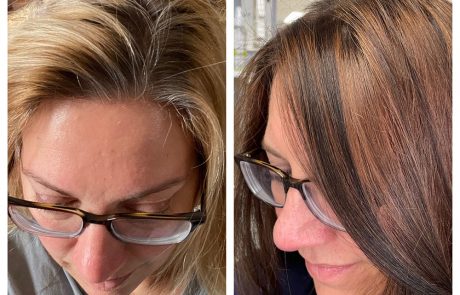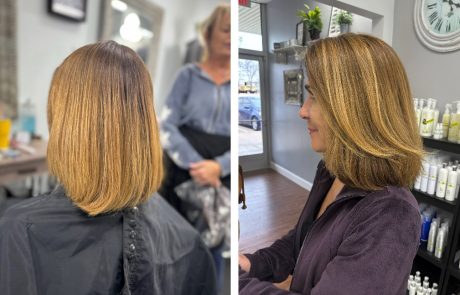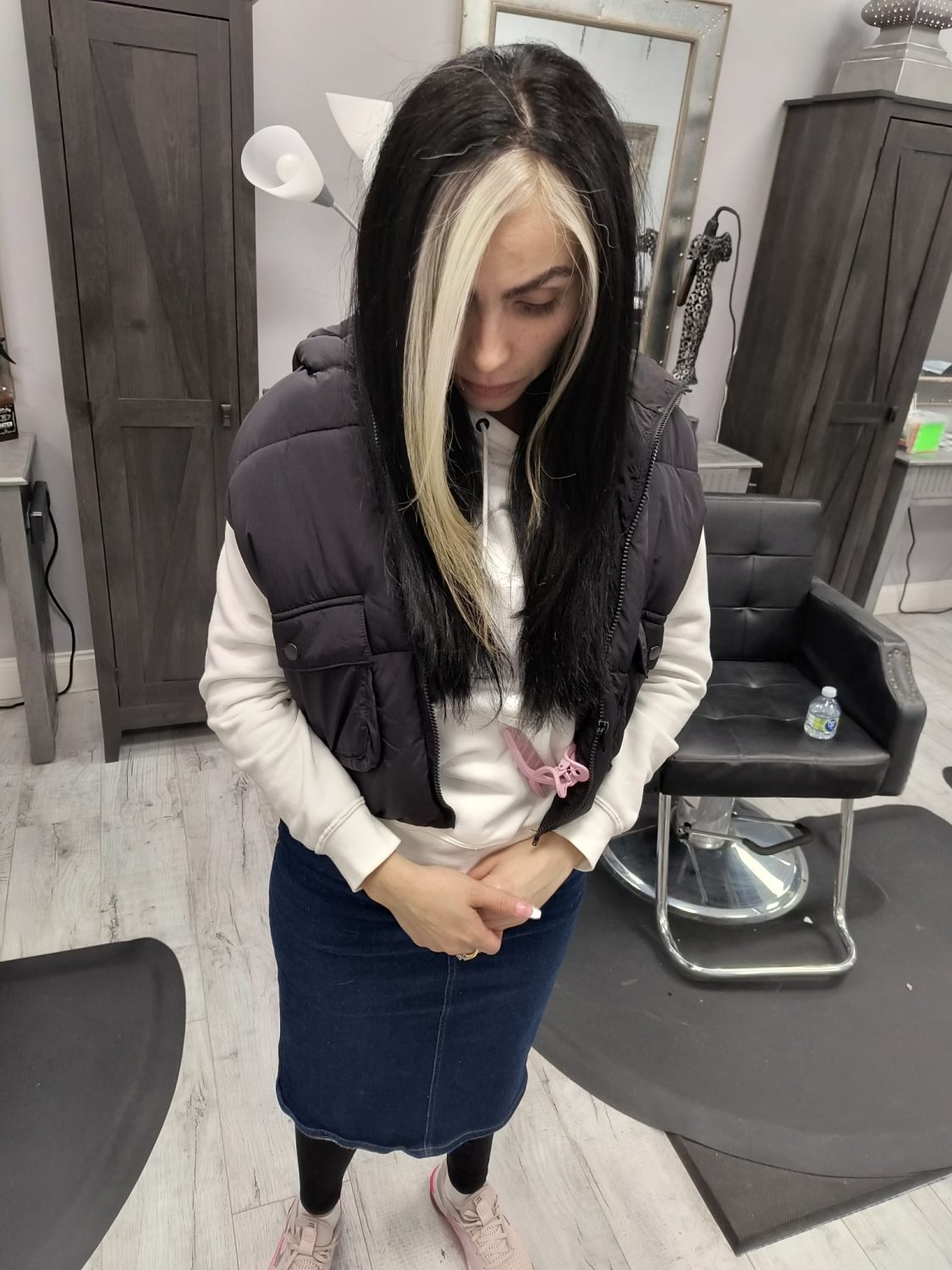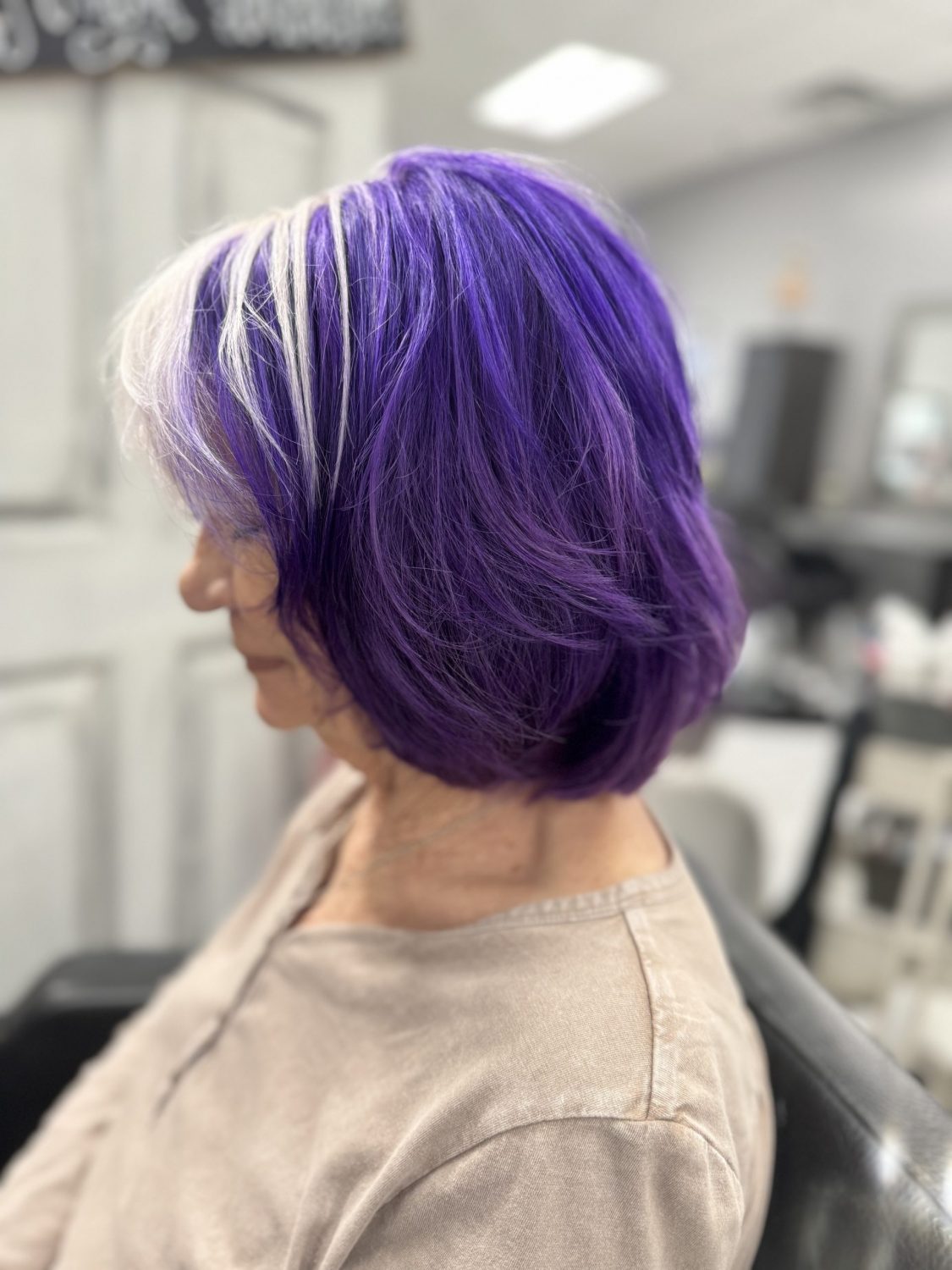Hair Color Correction
If you need hair color correction from a mishap with boxed color or a hairdresser making a mistake, there’s a few things you should know to help you choose a colorist with the right expertise and experience to achieve the results you want while minimizing potential damage to your hair.
First, look for experience.
Hair Color Correction takes a lifetime to understand. Remember, colorists have to make mistakes in order to know how to fix mistakes. They have to learn chemistry and understand the actual physical parts of hair. They also need to have a good understanding of the basics of color theory to be able to color correct. The process of coloring hair actually depletes hair of its color, so in order to fix it, the colorist has to figure out how to replenish it, which can be a unique chemical puzzle for every person.
Second, make sure the colorist asks a lot of questions.
Expert color correction takes into account many factors, such as the strength of the hair, also called the tenacity and porosity, how much processing the hair has gone through, and what was put on the hair, for example if the previous color was box color or professional color. Bleach also is a factor because it wreaks havoc on your hair if not used properly.
Last, when choosing a colorist, trust your Instincts.
Hair color correction can be a complex and time-consuming process for you. Choose a color correction specialist who makes you feel confident and comfortable about the process, the products, and their expertise.
Before & After Photo Gallery
(click or tap to zoom)
@madisonwelborn13 It needed A LOT of shaping 😂 #hairtok #hair #alittleshaping ♬ to the salon - inactive

Suzette Audia is a veteran in the hair styling industry with over 30 years of experience. She worked as a Matrix educator for 14 years, becoming one of the top instructors in hair color techniques before branching out on her own in 1993 with the creation of The Hair Design Group. She also developed her own line of products available at the salon that help stop the effects of aging and create soft, shiny, healthy hair.
If you’re ready to schedule your color correction appointment, call us at 972-489-3536. If you’re interested in learning more about what colorists need to understand to become experts in color correction, read on.
Photo Gallery
A good colorist knows color theory.
Color theory includes knowing the color wheel, complementary colors, and how colors interact to neutralize or enhance certain tones. For example, if a client’s hair has an unwanted brassy or orange hue, the colorist might need to use a blue-based toner to neutralize it.
Good color correction starts with checking the hair structure and assessing damage. A colorist will know if they need to improve the hair’s condition first, such as using conditioning treatments or bonding agents. They will also check the hair’s porosity. Hair is unique from person to person. It’s varying levels of porosity affect how it absorbs and holds onto color. Colorists need to consider the hair’s porosity and the pH level of the products they use. A ph-balancing product can help ensure even color uptake and minimize damage to hair.
In some cases, color correction involves removing existing color from the hair. This part of the correction process often requires the use of a color remover or a bleach-based product. Color removers work by reducing the dye molecules in the hair, making them easier to wash out. Bleach works by oxidizing the natural melanin in the hair, essentially “lightening” it to a pale yellow stage.
An experienced colorist understands the chemical processes involved in correcting hair color, including oxidation reactions, color removal, and toning. Oxidative dyes are used in most hair color products. These dyes require a developer, usually hydrogen peroxide, to initiate an oxidation reaction. During this process, the natural melanin in the hair is lightened or replaced with the new color. The strength of the developer and the processing time are critical factors that a colorist must understand, consider and watch with each client to correct or change the hair color effectively.
Toning is another part of the color correction process. After the hair is lightened or color is removed, the colorist may use toners to achieve the desired shade. Toners are semi-permanent or demi-permanent colors the colorist applies to neutralize unwanted undertones or enhance the desired color. For example, a purple-based toner can help counteract yellow tones in bleached hair.
As you can see, hair color correction is a complex process that requires a deep understanding of these chemical principles, an artist’s eye for color, and lots of practical experience. It’s essential to entrust this process to a skilled and experienced colorist who can navigate the science and art of color correction successfully.
Are you blonde, dark, or grey? Straight and neat, or curly and bouncy?
No matter your preference, everyone wants great hair. We’re here to deliver it. Check out our reviews and our Facebook page to see our clients’ comments and before and after pictures of fabulous hair, then make your appointment today.












